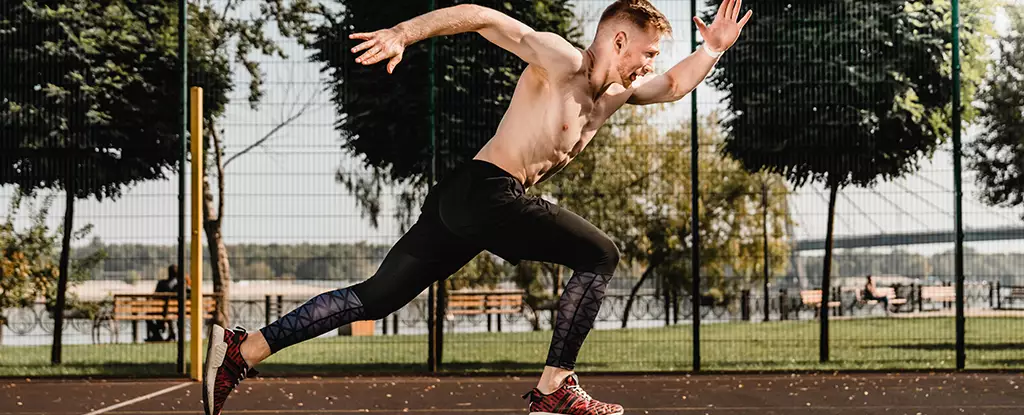For fitness enthusiasts and professionals alike, the mantra often touted is that exercise is synonymous with superior health. However, emerging research uncovers a paradox that even the most ardent exercise junkies should consider: intense physical activity might come at a cost to the immune system. A 2023 analysis assessing fluid molecules from over 4,700 instances surrounding post-exercise recovery points to a concerning reality for those engaged in extreme fitness routines, especially emergency workers and athletes. While the broader societal narrative paints exercise as a bastion of vitality, it becomes crucial to reflect on how our bodies respond after pushing physical limits.
The study, orchestrated by researchers from the Pacific Northwest National Laboratory, challenges an established dogma—suggesting that the very act of excessive exercise might render the body more susceptible to viral infections immediately following such exertion. Biomedical scientist Ernesto Nakayasu highlights a critical insight: “People who are very fit might be more prone to viral respiratory infection immediately after vigorous exercise.” This revelation underscores a growing need to dissect the body’s immune responses in the wake of grueling workouts.
The Honor of Exhaustion: Immune Suppression or Adaptation?
The relationship between rigorous exercise and its effects on immune functions is a mysterious domain. While it is widely accepted that moderate activity generally bolsters long-term immune health, the aftermath of strenuous workouts remains hotly debated. Some studies have hinted at a correlation between intense exercise and an uptick in upper respiratory infections among athletes. Yet, whether this association is indicative of causation remains an open query within the scientific community.
Intrigued by this critical juncture, Nakayasu’s team employed a unique methodology to ascertain the nuances of immune behavior post-exercise. The research focused on firefighters, a cohort that includes individuals subjected to extreme physical demands. By analyzing blood plasma, urine, and saliva surrounding intense workout conditions, they sought clarity on immune responses triggered by exhaustion. Kristin Burnum-Johnson, a bioanalytical chemist with PNNL, conveyed their objective: “We wanted to take an in-depth look at what’s happening in the body and see if we’re able to detect danger from exhaustion in its earliest stages.”
What they unearthed was a tapestry of biological changes: while physical markers showcased the body’s necessary adaptations to exercise, the researchers also noted a decrease in inflammatory molecules, which are crucial for fighting infections. This drop in inflammation amid a surge of opiorphin—a compound facilitating the widening of blood vessels—beckons questions about the immediate implications for immune functionality.
Unraveling the Immune Response: A Complex Narrative
The research displayed additional complexities, examining shifts within the oral microbiome of the firefighters post-exercise. Such transformation raises the hypothesis that an uptick in antimicrobial peptides might have been triggered as a compensatory mechanism to account for immune deficits following rigorous physical effort. However, these conclusions are not without contention. The observed increase in peptides was not effective in combating E. coli growth, vying skepticism toward their protective efficacies.
Amidst varying interpretations, some experts argue that the changes observed could signal a veiled fortification of immune vigilance rather than outright suppression. This nuance highlights that immune responses are far from a binary state; rather, they exist within a spectrum that requires further investigation. Researchers point out that an exclusive focus on healthy, active male participants could skew recognition of wider immune dynamics, thereby emphasizing the necessity for broader studies encompassing diverse populations.
Moreover, the unique occupational hazards faced by firefighters pose an additional layer of complexity. Exposure to pollutants may generate an altered immune landscape, hinting at the intricate interplay between environmental stimuli and bodily resilience.
The Takeaway: Navigating the Fitness Frontier
As we wade through this nuanced discourse on health and exercise, the takeaway profoundly necessitates balance. For those who fiercely engage in extreme workouts, it is imperative to remain cognizant of potential immune ramifications. The dichotomy of enhancing strength and resilience while recognizing the need for recovery requires not just physical adaptation but also informed decision-making about exercise routines.
While the invigorating rush of an intense workout can be a hallmark of personal achievement, acknowledging the body’s signals is crucial. The notion that fitness is purely protective and health-promoting must be revisited with a discerning eye, as this evolving narrative paves the way for a more comprehensive understanding of wellness in the age of extremes.

